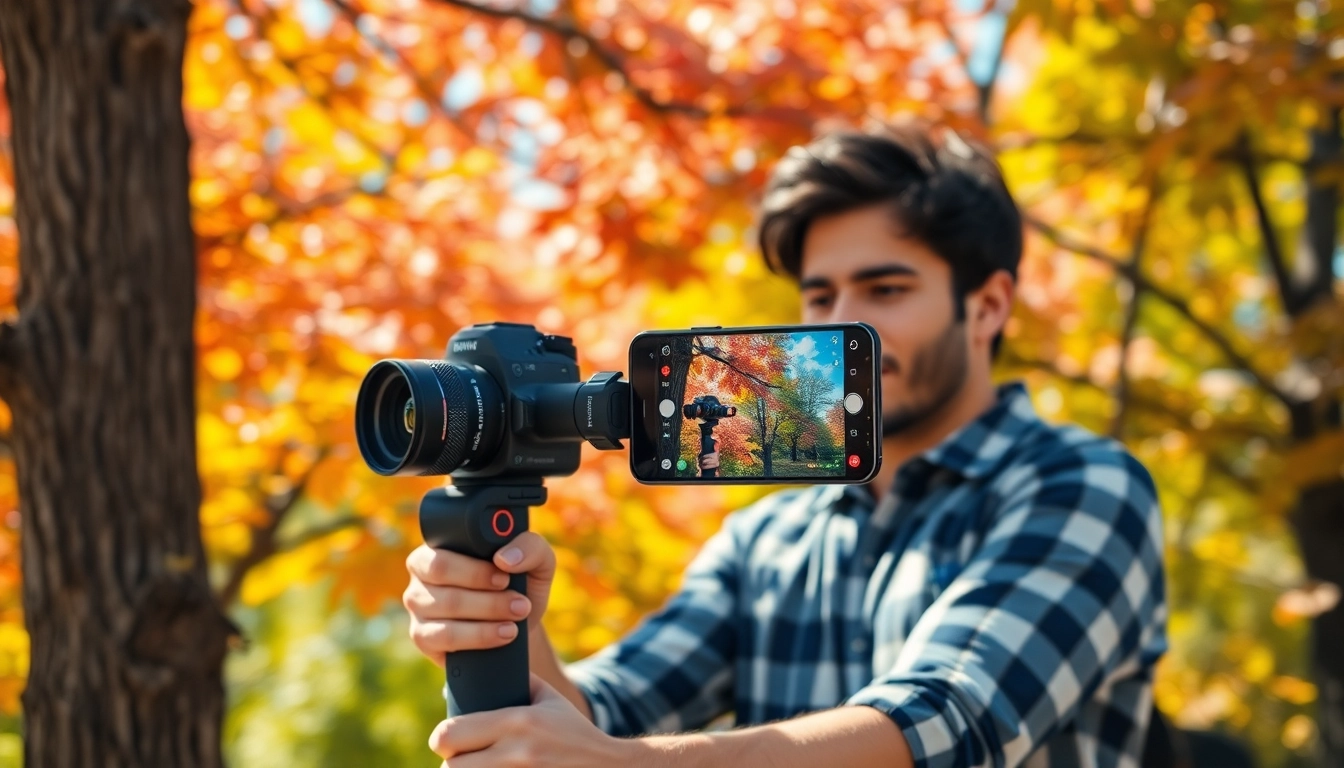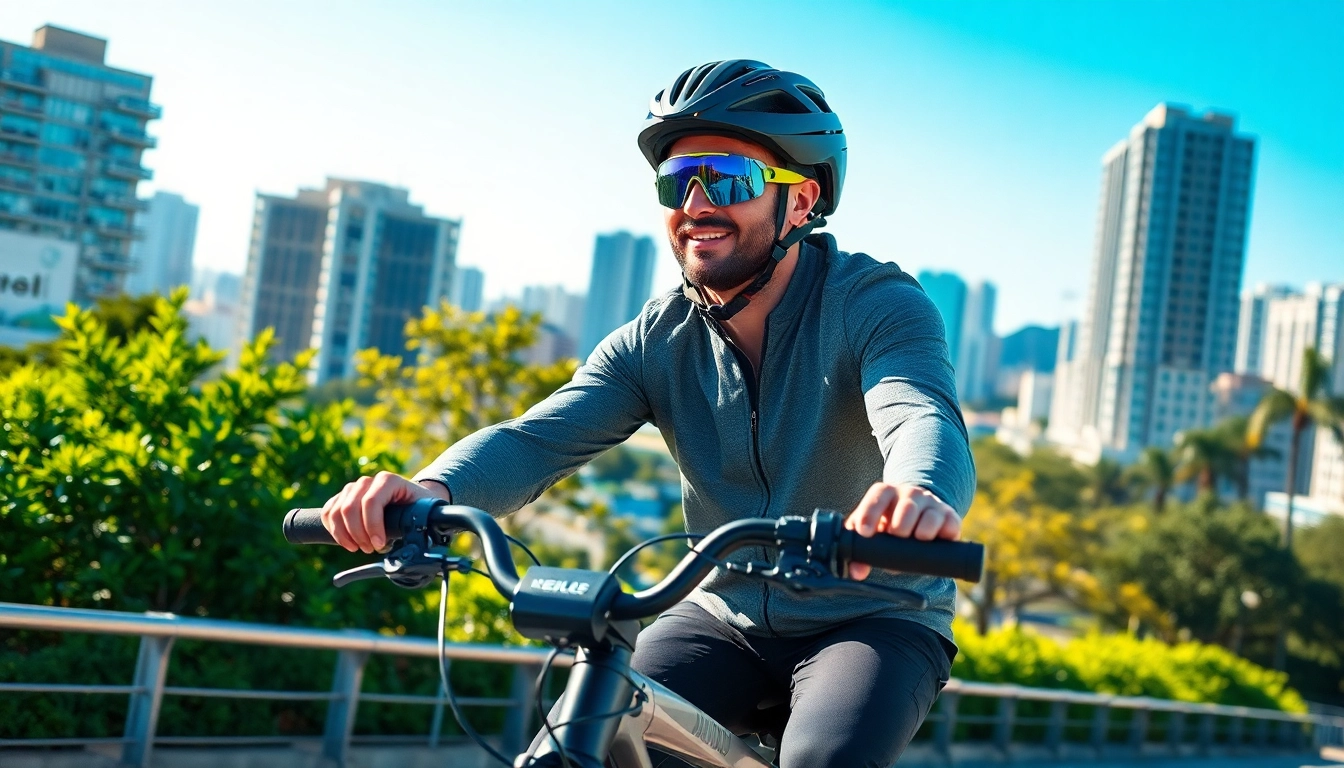Understanding the Gimbal for iPhone
What is a Gimbal and How Does It Work?
A gimbal is a mechanical device that allows a camera or smartphone to remain stable while the operator moves. It essentially serves as a balance system that employs motors to counteract the motion of the user, providing a fluid, smooth filming experience. Think of it as a high-tech stabilizing tool that can handle any bumps, shakes, or sudden movements, ensuring that your videos and photos remain steady and professional-looking.
Gimbals work through three axes of rotation—pitch, roll, and yaw. This tri-axis system detects movement in any direction and automatically adjusts to stabilize the smartphone, giving filmmakers top-quality visual content even in challenging conditions. Such mechanisms make a gimbal for iPhone an essential accessory for aspiring videographers and casual users alike.
Benefits of Using a Gimbal for iPhone
Integrating a gimbal into your filming toolkit brings numerous benefits:
- Enhanced Stability: The primary advantage is the exceptional stability it provides while filming. It minimizes shakes that can occur when walking or running, creating a polished final product.
- Professional Quality: A gimbal supports advanced filming techniques like panning shots and tracking, enabling you to create cinematic experiences comparable to professional camera setups.
- Improved Flexibility: Portable and lightweight, gimbals are easy to carry and set up, making them perfect for a variety of shooting environments, including travel, events, and short films.
- User-Friendly: Modern gimbals often come equipped with easy-to-use apps and automated features that streamline the filming process for users of all skill levels.
Common Features to Look for in a Gimbal
When selecting a gimbal for your iPhone, several key features and functionalities should be considered to enhance your shooting experience:
- Battery Life: Look for a gimbal with ample battery life, ensuring it lasts for your shooting sessions without frequent recharging.
- Weight Capacity: Ensure that the gimbal can support the weight of your iPhone model, considering any additional attachments you may use.
- Smartphone Compatibility: Check if the gimbal is compatible with the dimensions and features of your specific iPhone model.
- Control Features: Features like joystick control, preset modes for specific shooting styles, and tracking capabilities can vastly improve your cinematography.
- Portability: Lightweight and foldable designs make for easier transport, allowing you to bring your gimbal wherever you go.
Choosing the Right Gimbal for iPhone
Key Specifications to Consider
Choosing a gimbal involves understanding its specifications to ensure it meets your filming requirements. Key specifications include:
- Motor Strength: More potent motors tend to offer better stabilization, especially when filming in dynamic situations.
- Movement Range: The gimbal’s pan, tilt, and roll range should align with the types of shots you plan to capture.
- Firmware Updates: Some gimbals allow for firmware updates, which can improve functionality and add new features over time.
- Charging Options: Consider gimbals that can be charged via USB-C or similar options for convenience.
Understanding Your Filming Needs
Every user has different filming needs based on their content type and shooting style. Here are some questions to guide your choice:
- Are you filming short clips for social media, or are you working on longer projects?
- Do you need features like time-lapse, tracking, or panorama modes?
- Will you be shooting indoors, outdoors, or both?
Clarifying your specific needs can help you select a gimbal that not only fits your technical requirements but also enhances your storytelling capabilities.
Price Ranges and Budget Considerations
Gimbals for iPhone come in various price ranges. Entry-level gimbals may cost around $50 to $150, while professional models can exceed $500. Factors to consider when budgeting include:
- Features: More advanced features typically come at a higher price point.
- Brand Reputation: Established brands often price their products higher due to their proven quality and support.
- Warranty and Support: A good warranty can be worth the extra cost, providing reassurance for your investment.
Best Practices for Filming with a Gimbal for iPhone
Stabilization Techniques to Enhance Your Shots
Utilizing a gimbal effectively requires knowledge of stabilization techniques. Here are a few methods to improve your shots:
- Proper Grip: Maintain a firm yet relaxed grip on the gimbal, holding it with both hands for better control.
- Use of Body Motion: Incorporate your body’s natural motion to create smoother movements. Bend your knees slightly when walking to absorb bumps.
- Frame Your Shots: Take a moment to compose your shot before moving the gimbal, which can lead to smoother transitions.
Tips for Shooting Dynamic Scenes
When shooting dynamic scenes such as sports or fast-paced events, follow these tips:
- Slow and Steady: Move slowly with the gimbal to avoid sudden jerks that can lead to shaky footage.
- Anticipate Movement: Predict the direction of your subject’s movement, allowing you to tilt or pan in advance.
- Use Tracking Features: If your gimbal has tracking capabilities, utilize them for shooting subjects in motion.
Common Mistakes to Avoid
Knowing what pitfalls to avoid can save you time and improve your output:
- Neglecting to Balance: Always ensure your smartphone is properly balanced on the gimbal before use.
- Overloading with Accessories: Avoid attaching too many accessories to your iPhone, as they may affect the balance and functionality of the gimbal.
- Ignoring Settings: Familiarize yourself with the gimbal’s settings before filming, as they can vastly affect your shooting experience.
Expanding Your Filming Skills
Advanced Techniques for Capturing Cinematic Footage
To take your filmmaking to the next level, consider these advanced techniques:
- Low-Angle Shots: Use the gimbal to easily achieve low-angle shots that can add drama and perspective to your footage.
- High-Angle Shots: For aerial-like views, extend the gimbal overhead and move smoothly for expressive shots.
- Speed Ramp Techniques: Introducing speed ramps in your editing can add dynamism and maintain viewer engagement.
Utilizing Effects and Features of the Gimbal
Many gimbals come with specialized modes designed for unique effects. Explore these creative options:
- Time-Lapse: Use the gimbal’s time-lapse feature for stunning scenes that unfold over time.
- Motion Time-Lapse: Combine movement with time-lapse for a dynamic effect that captures the essence of time passage.
- Panorama Shots: Some gimbals offer auto-pano modes which can help capture expansive vistas effortlessly.
Editing Tips for Gimbal Footage
Editing gimbal footage can enhance its professional quality. Here are some effective tips:
- Color Grading: A professional color grade can elevate the visual appeal of your footage significantly.
- Audio Synchronization: Use sound design to complement your visuals—smooth background music can enhance the emotional feel of your video.
- Cut to the Beat: Editing cuts to align with music beats can create a more engaging viewing experience.
Maintaining Your Gimbal for iPhone
Care and Storage Tips
Proper care and storage of your gimbal will ensure longevity and performance:
- Cleaning: Regularly clean the gimbal to prevent dust and debris buildup on the motors and smartphone mount.
- Safe Storage: Use a protective case for transport and storage, preventing accidental damage.
- Avoid Extreme Conditions: Keep your gimbal out of extreme temperatures and avoid exposing it to water.
Regular Maintenance Routines
To keep your gimbal in peak condition, establish a maintenance routine:
- Check Firmware: Regularly check for and install firmware updates for enhanced performance.
- Battery Care: Use your gimbal regularly and recharge it occasionally, even if you haven’t used it for a while.
- Physical Inspection: Routinely inspect for wear and tear, especially on moving parts and joints.
How to Troubleshoot Common Issues
If your gimbal experiences performance issues, consider these troubleshooting steps:
- Rebalancing: If your shots appear shaky, check the balance of your smartphone and re-adjust as necessary.
- Calibration: Perform a calibration if the gimbal is not stabilizing correctly or responding properly to commands.
- Consult Manuals: Always refer to the user manual for specific troubleshooting steps related to your gimbal model.



